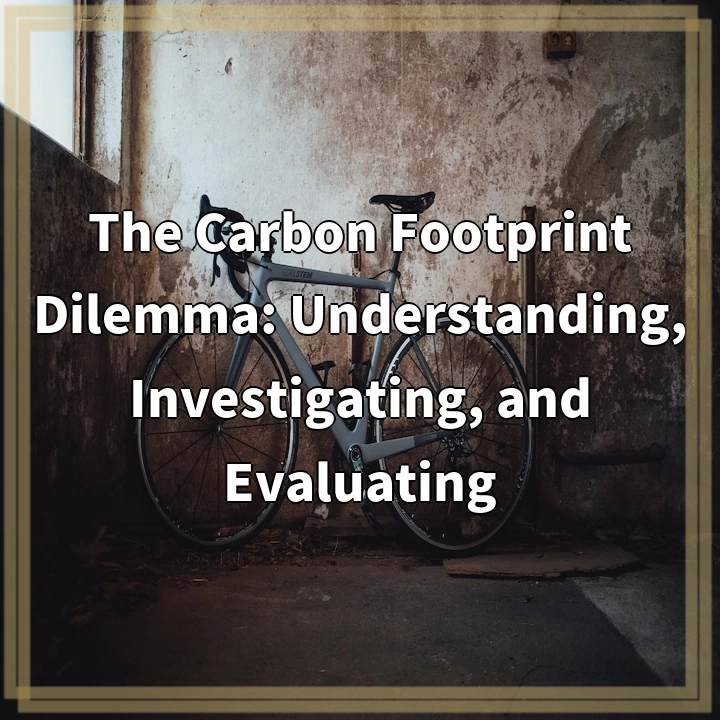Physical Address
304 North Cardinal St.
Dorchester Center, MA 02124
Physical Address
304 North Cardinal St.
Dorchester Center, MA 02124

The carbon footprint dilemma refers to the total amount of greenhouse gas emissions produced by human activities, measured in units of carbon dioxide (CO2) equivalent. It is a complex issue that assesses the impact of individuals, organizations, or products on climate change.
1. Climate Change: Excessive greenhouse gas emissions, particularly CO2, intensify the greenhouse effect, resulting in rising global temperatures, extreme weather events, and disrupted ecosystems. Significant reductions in carbon footprints are necessary to decelerate climate change.
2. Environmental Degradation: Human activities, such as deforestation and the extraction of fossil fuels, contribute to the accumulation of carbon dioxide in the atmosphere. These practices lead to habitat destruction, loss of biodiversity, and negative impacts on air and water quality.
3. Resource Depletion: High carbon footprints are often associated with unsustainable consumption patterns, depleting finite resources like fossil fuels, water, and minerals. Minimizing carbon footprints promotes more sustainable resource management for future generations.
4. Socioeconomic Inequities: Low-income communities with limited access to clean energy sources rely heavily on fossil fuels, increasing their carbon footprints. Marginalized communities bear a disproportionate burden in adapting to climate change impacts.
5. Public Health Impacts: The burning of fossil fuels emits harmful pollutants that contribute to air pollution, leading to respiratory and cardiovascular diseases. High carbon footprints exacerbate climate change, which can result in the spread of infectious diseases, food and water shortages, and mental health issues.
1. Transition to Renewable Energy: Investing in renewable energy infrastructure and promoting widespread adoption of solar, wind, and geothermal energy can significantly reduce carbon footprints and decarbonize energy production.
2. Energy Efficiency Measures: Implementing energy-efficient technologies, conservation practices, optimizing transportation systems, and adopting sustainable building designs contribute to significant energy savings and emissions reductions.
3. Sustainable Transportation: Promoting options like public transit, cycling, and electric vehicles helps lower carbon footprints associated with transportation. Investing in public transportation infrastructure and transitioning to electric vehicles contribute to emissions reductions.
4. Adopting Circular Economy Practices: Transitioning to a circular economy, minimizing waste generation, and promoting sustainable production and consumption patterns reduce carbon footprints. Recycling and composting programs play a significant role.
5. Reforestation and Forest Conservation: Protecting and restoring forests as carbon sinks through reforestation efforts, ending deforestation practices, and implementing sustainable forestry contribute to carbon sequestration and climate change mitigation.
6. Individual Actions and Consumer Choices: Individuals can reduce carbon footprints through energy conservation, waste reduction, adopting plant-based diets, supporting sustainable businesses, and advocating for climate-friendly policies.
Addressing the carbon footprint dilemma requires a collective effort from governments, businesses, communities, and individuals. By implementing these solutions and prioritizing sustainability, we can work towards a more resilient and environmentally conscious future.
Keywords: carbon footprint, greenhouse gas emissions, climate change, environmental degradation, resource depletion, socioeconomic inequities, public health impacts, renewable energy, energy efficiency, sustainable transportation, circular economy, reforestation, individual actions, sustainability.
If you’re wondering where the article came from!
#